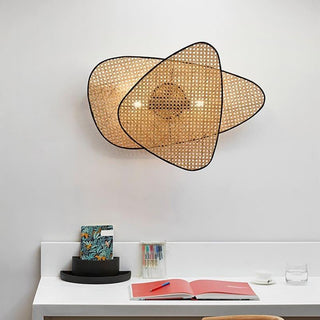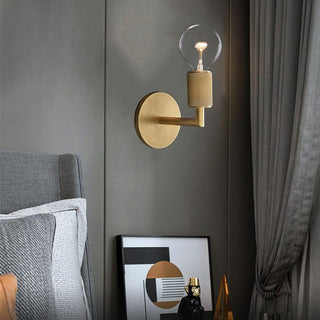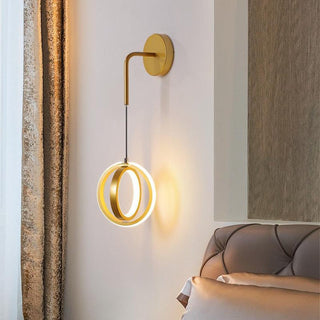Choosing the right light bulb for your space can transform how it looks and feels. The perfect combination of light quality, color, brightness, and energy efficiency makes all the difference. Let’s break down everything you need to know, step by step, so you can choose a bulb that fits your needs perfectly.
1. Understanding light bulbs: the basics

Types of light bulbs
Incandescent light bulbs: the traditional choice
Incandescent bulbs are what most of us grew up with. They produce light by heating a tungsten filament inside a glass bulb. These bulbs emit a warm white glow, creating a cozy atmosphere. However, their energy consumption is high, and their lifespan is short compared to modern options. A standard incandescent lamp lasts about 1,000 hours and requires frequent replacement.
LED bulbs: energy efficiency at its best
LED bulbs (light-emitting diodes) are the leaders in energy efficiency. They use significantly less electricity than incandescent light bulbs while producing the same level of brightness. LED lighting is available in a wide range of color temperatures, from soft yellow to bright white. They’re dimmable, long-lasting, and cost-effective. With a lifespan of up to 25,000 hours, they’re an excellent choice for both homes and businesses.
Compact fluorescent lamps (CFLs): a step up from incandescent
CFL bulbs are known for their spiral shape and energy-saving properties. These bulbs are more efficient than traditional incandescent light bulbs and last up to 10,000 hours. CFL bulbs emit light in a variety of colors, including soft white and daylight. However, they take some time to warm up to full brightness and contain mercury, which requires careful disposal.
Halogen bulbs: bright and versatile
Halogen bulbs are a type of incandescent light bulb that uses halogen gas to increase efficiency. They produce bright, white light and are often used in task lighting for kitchens, offices, and bathrooms. While they’re more efficient than traditional incandescent lamps, they still generate a lot of heat and don’t last as long as LEDs.
Smart bulbs: the future of lighting
Smart bulbs bring convenience and flexibility to your home. They can be controlled via an app, dimmer switch, or voice commands. Smart lighting allows you to change colors, set timers, and even sync your lights with your daily routine. These bulbs are often LED-based, combining energy efficiency with advanced technology.
Fittings and bulb cap types
Before buying, check your light fixture to find the correct bulb base.
The names of bulb cap types, such as E27, B22, or GU10, follow a standardized nomenclature that describes their shape, size, and connection method. Here's a breakdown to help you understand these naming conventions:
Letter codes
The first letter (or letters) in the name indicates the type of base or fitting:
- E: Stands for "Edison Screw," named after Thomas Edison. This fitting screws into the socket.
- B: Indicates a "Bayonet Cap," which uses a twist-and-lock mechanism.
- GU: Refers to a "Twist-and-Lock" base, often used for spotlights.
- G: Represents a "Bi-pin" or "Pin" base with two pins or pegs.
- R: Refers to a "Recessed" connection, commonly found in linear bulbs.
Numbers in the name
The number following the letter(s) denotes the diameter of the cap or the distance between pins, measured in millimeters:
- E27: An Edison Screw with a 27mm diameter, commonly used in standard light fixtures.
- B22: A Bayonet Cap with a 22mm diameter, often seen in ceiling and table lamps.
- GU10: A Twist-and-Lock base with pins 10mm apart, typically used in spotlights.
- G4: A Pin base with two thin pins spaced 4mm apart, ideal for low-voltage lighting.
Additional letters or numbers
Sometimes, additional characters provide more details about the fitting:
- d: Indicates a double-contact base, such as in B22d.
- s: Represents a single-contact base, as in E27s.
- R7s: Specifies a linear double-ended cap, commonly used for floodlights.
Examples of common fittings
-
E27: A standard Edison Screw with a 27mm diameter, often used in household bulbs.
- B15d: A Small Bayonet Cap with a 15mm diameter and double contacts, found in smaller fixtures.
- GU5.3: A low-voltage spotlight fitting with pins 5.3mm apart.
- G9: A looped pin base used in decorative and under-cabinet lighting.
By understanding this nomenclature, you can easily identify the right fitting for your fixture, ensuring compatibility and proper performance. If you're unsure, check the markings on your old bulb or consult the fixture’s specifications for guidance.
Bulb shapes
The shape of a bulb is more than just its appearance—it directly affects how light is distributed and the overall aesthetic of your space. Choosing the right bulb shape ensures both functionality and style. Here are the most common bulb shapes and their typical uses:
Classic shapes: pear and candle bulbs
- Pear-shaped bulbs (A-series): These are the standard, everyday bulbs most people are familiar with. The “A” stands for "arbitrary," and they have a rounded shape that tapers slightly at the base. Commonly used in table lamps, ceiling fixtures, and general-purpose lighting, they are versatile and widely available.
- Candle-shaped bulbs: Slim and elegant, these bulbs mimic the shape of a flame. They’re often used in chandeliers, wall sconces, and decorative fixtures, especially where an ornate look is desired. Candle bulbs are ideal for creating a warm, inviting ambiance.
Globe bulbs
- Shape and use: Globe bulbs have a perfectly round, larger-than-average shape, making them ideal for decorative lighting. They are commonly used in vanities, pendant lights, or open fixtures where the bulb itself is a part of the design.
- Popular settings: Bathrooms, dressing rooms, or anywhere even, soft lighting is needed. Globe bulbs provide a balanced distribution of light, reducing shadows—perfect for mirrors or grooming areas.
Spotlight and reflector bulbs
- Spotlight bulbs (PAR and MR series): These bulbs are designed to focus light in a specific direction, making them ideal for task lighting, accent lighting, and outdoor fixtures. PAR (Parabolic Aluminized Reflector) bulbs are often used in recessed lighting or floodlights, while MR (Multifaceted Reflector) bulbs are perfect for track lighting or display cases.
- Reflector bulbs (R series): With a broader beam of light than spotlights, reflector bulbs are commonly found in downlights or large-area lighting, such as kitchens and workspaces.
Tubular bulbs
Tubular bulbs, as the name suggests, are long and cylindrical. They are often used in under-cabinet lighting, picture lights, or decorative wall sconces. Linear fixtures like bathroom vanity lights or kitchen cabinets frequently use tubular bulbs to provide even illumination
Decorative and filament bulbs
- Vintage-inspired bulbs: These bulbs are often designed with visible filaments, creating a retro or industrial look. Available in various shapes, such as teardrop or globe, they are popular in exposed fixtures like pendant lights or wall sconces.
- Modern aesthetics: These bulbs pair form with function, adding character to decorative settings while providing warm, ambient lighting.
Specialty shapes
- Twist or spiral-shaped bulbs: Often seen in CFL bulbs, these are energy-efficient options used for general-purpose lighting. While not as decorative, their unique shape helps them fit into compact fixtures.
- Flat or disc-shaped bulbs: These bulbs are common in modern LED lighting products and are used in recessed or flush-mount fixtures. Their flat profile makes them ideal for areas with limited space, such as low ceilings.
| Bulb Shape | Key Features | Best Uses |
|---|---|---|
| Pear (A-series) | Rounded, classic design | Table lamps, ceiling fixtures, general lighting |
| Candle | Slim, flame-like, decorative | Chandeliers, wall sconces, candelabras |
| Globe | Large, round, even light distribution | Vanities, pendant lights, decorative fixtures |
| Spotlight (PAR/MR) | Directional, focused light | Recessed lighting, track lighting, outdoor spots |
| Reflector (R-series) | Wide beam angle for large areas | Kitchens, workspaces, large rooms |
| Tubular | Long, cylindrical for linear illumination | Under-cabinet lights, fluorescent fixtures |
| Capsule | Compact, bright, focused light | Desk lamps, under-cabinet lighting, decorative |
| Striplight | Long, tubular for continuous illumination | Shelves, picture lights, display cabinets |
| Golf ball | Small, spherical, decorative | Chandeliers, wall sconces, table lamps |
| Dichroic | Reflective coating for precise lighting | Spotlights, galleries, retail displays |
Tips for choosing the right shape
- Match the bulb to the fixture: Open fixtures work well with decorative shapes like globes or filament bulbs, while enclosed fixtures are better for classic shapes like A-series bulbs.
- Consider the purpose: Use spotlight shapes like PAR or MR for focused lighting, and globe or tubular shapes for even, diffused light.
- Think about aesthetics: Decorative bulbs, like candle or filament styles, can enhance the visual appeal of chandeliers, sconces, or pendants.
2. Understanding brightness, energy consumption and color temperature
Brightness and lumens: understanding light output
If there's one thing to remember about brightness, it's that it's measured in lumens. Not watts.
While watts indicate the energy a bulb consumes, lumens reveal how much light it actually produces.
For example, a 60-watt incandescent bulb typically emits around 800 lumens, but an energy-efficient 9-watt LED can provide the same brightness.
Understanding this distinction helps you select the right bulb for your space while saving energy and money. For more details on brightness vs energy consumption, check out our comprehensive guide: Lumen vs Watt .
Wattage and energy efficiency
Wattage refers to the energy a bulb consumes, not its brightness. For example, a 9-watt LED can produce the same light output as a 60-watt incandescent bulb.
Switching to LED or CFL bulbs can reduce energy consumption and save money on your electric bill. Always check your fixture for the maximum wattage it can handle.
Color temperature and kelvin scale

The color temperature of a bulb is not about actual heat but about color. It's about how warm (orange) or cool (blue) the light from a bulb appears.
It’s measured in Kelvin (K) and ranges from warm orange/yellow tones to cool blue hues, each creating a different feel in your space. The lower the Kelvin, the warmer the color. The higher the kelvin, the cooler the kelvin.
- Warm white (2,700K-3,000K): These soft, yellow tones make spaces like living rooms and bedrooms feel cozy and relaxing.
- Cool white (4,000K-5,000K): A bright and neutral light that works well in kitchens, bathrooms, or anywhere you need clear, focused lighting.
- Daylight (5,000K-6,500K): Bright and bluish, daylight bulbs mimic natural light, making them ideal for workspaces, reading, or any task requiring sharp clarity.
Matching the right color temperature to your space helps set the mood and function. For more details, read our comprehensive guide about color temperature at home: Color temperature 101 - Create the perfect atmosphere.
CRI: color rendering index
CRI measures how accurately a bulb displays colors compared to natural light. Selecting bulbs with higher CRI levels (90 or above) is crucial for areas like bathrooms or art studios, where color accuracy matters.
Dimmable and smart options
For flexible lighting solutions, dimmable LED bulbs and smart bulbs are great choices that serve multiple purposes in your house.
Dimmable LED bulbs allow you to easily adjust brightness levels, making it simple to create the perfect atmosphere. Whether you need a brighter light for reading or a softer glow for relaxing, these bulbs provide an easy way to control your lighting. They are especially useful in living rooms, dining areas, or bedrooms, where the mood can change throughout the day.
Smart bulbs offer even more functionality by connecting to apps or voice assistants, letting you control brightness, schedule lighting, or switch colors effortlessly. They’re ideal for spaces like home offices or kitchens, where lighting needs vary depending on the purpose of the room. For example, you could program lights to brighten in the morning for a productive start to your day or dim in the evening to help you unwind.
These options are an easy upgrade for any house, offering convenience, versatility, and energy-saving benefits. Whether you’re setting the mood or improving functionality, dimmable and smart bulbs are designed to make your lighting work for you.
3. Benefits of energy-efficient bulbs

Cost savings
Energy-efficient bulbs like LEDs and CFLs consume less power and last longer, resulting in significant savings over time. Although the initial cost of these bulbs may be higher, their long lifespan makes them a cost-effective option in the long run.
Reducing heat output
Efficient light sources like LEDs produce less heat, making them safer and more comfortable to use, especially in small spaces. Traditional incandescent bulbs emit a lot of heat, which can raise your room’s temperature and increase cooling costs.
Environmental impact
Switching to energy-efficient lighting reduces your home’s carbon footprint. Look for bulbs with an Energy Star rating to ensure you’re buying products that meet high standards for efficiency and quality.
4. Room-by-room lighting recommendations

Bedrooms
For a relaxing ambiance, use soft white light (around 2,700K) with a CRI above 80. Pair warm LED bulbs with dimmer switches to adjust brightness levels for reading or winding down at the end of the day.
Kitchens
Bright, cool white lighting is ideal for kitchens. Use LEDs with high lumens (1,600 or more) to illuminate counters and prep areas. Consider recessed lighting or under-cabinet fixtures for task lighting.
Bathrooms
Bathrooms require bright, focused lighting with high CRI for tasks like grooming. Daylight bulbs (5,000K) are a great choice for clarity and detail.
Living rooms
Create a cozy and inviting atmosphere with warm white lighting. Use LED lamps and dimmable options to enhance flexibility and ambiance.
Outdoor spaces
For outdoor lighting, choose durable LED bulbs with weather-resistant designs. Warm white or daylight options work well for porches and patios, while motion-sensor smart bulbs provide added security.
5. Emerging trends in lighting
Human-centric lighting
New lighting technologies adjust color temperature and brightness throughout the day to mimic natural light. This helps regulate your circadian rhythm, promoting better sleep and productivity.
Decorative and statement bulbs
Decorative bulbs, such as vintage-style filament LEDs, add character to your space. They’re perfect for exposed fixtures like pendant lights or table lamps.
Smart lighting systems
Smart bulbs and dimmer switches give you complete control over your lighting. Change colors, set schedules, or sync lighting with music and movies for an immersive experience.
Are LEDs worth the cost?
Yes! LEDs save energy, last longer, and require less frequent replacement, making them an excellent investment.
Final thoughts
Choosing the right bulb doesn’t have to be a challenge. By understanding your space, preferences, and energy needs, you can find lighting that works perfectly for your home. Switch to efficient, high-quality bulbs, and enjoy the benefits of better lighting every day!



